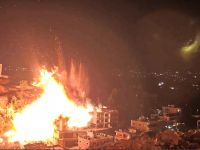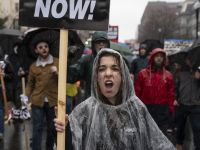Introduction: Offshore hydrocarbons top the South East Asian agenda as the region's economic revival continues. Infield's Dr Roger Knight sets the scene.
The financial straits that have held the Tiger economies of South East Asia in check for the past two years seem to be fast disappearing, and the good times of economic growth are returning. Nowhere is this change in fortunes more obvious than in the offshore oil and gas industry.
What was viewed, even a few months ago, as an optimistic forecast is now being overtaken by the speed of events, and no country across this vibrant region is exempt from the new feelings of confidence that are returning.
The Infield database of offshore field developments has been constantly tracking these events and the trends are certainly all turning to the positive.
Table 1 shows the increasing number of fields that are being considered for development over the next five years, and Table 2 the total proven and probable reserves that are currently expected to be recovered from them in easy to compare million barrels of oil equivalent (mmboe) format.
Traditionally, offshore production in South East Asia has been concentrated in regions accessible by simple piled wellhead platforms feeding production centres, but as more varied and less accessible reserves are utilised more state of the art production techniques will come to be used.
Subsea completion technology has advanced greatly in recent years and has, on the whole, been less utilised in this region than in most others.
This is set to change as remote gas and oil reserves are brought into production in areas of new production, particularly those bordering the South China Sea.
Table 3 illustrates the regional breakdown of subsea completions anticipated over the next five years and when viewed in conjunction with Tables 4, 5 and 6 provides a comparison of this development type with the numbers of fixed and floating production platforms and wellhead platforms expected over the same timeframe.
Finally the expected lengths of flowlines needing to laid to serve these facilities is shown in Table 7 for diameters of 12in or less, or greater than 12in in Table 8.
A whole series of trunklines, mostly gas, are planned following on this year's installation work on the Indonesian West Natuna line to Singapore and the Malampaya line to Luzon in the Philippines.
Thailand: The Gulf of Thailand has been the scene of some very interesting events on the exploration front recently.
At Yala, and more particularly at Plamuk, oil has been discovered by Unocal in an area previously believed to be gas-rich, but liquid poor.
A fast track, maybe FPSO based project, to harness what would truly be 'black gold' to oil-poor Thailand is surely in the offing.
Immediately to the north of these fields Chevron assumed operatorship of block B8/32 last year, following its $91 million purchase of Rutherford Moran.
It has plans to expand production in the block with the development of the Maliwan field, probably shortly to be followed by that of the Jarmjuree field.
Orders for as many as six new platforms could be forthcoming in the near term. Total reserves for the block as a whole are believed to lie in the range of 3 trillion cubic feet of gas and 350 million barrels of recoverable liquids.
Gas supplies from the Erawan region in the central Gulf of Thailand are being further supplemented by the phase two development of the large Pailin field and by the third phase of development of the massive Bongkot field in the southern Gulf.
It is here, where Joseph Conrad's hero in his novel The Shadow Line came of age, that the Thai gas industry will also come of age, over the next couple of years, with the development of the Cakerwala field and its satellites in the JDA (Joint Development Area) operated in conjunction with Malaysia.
Contracts are already being let, for what is to be, by any standards, a world-class project. Reserves of the order of 10Tcf and 300 million barrels of liquids will be developed from a multiple platform centre linked to a series of wellhead platforms.
Liquids will be loaded offshore into a moored FSO and the gas will be exported to shore by a 34in diameter pipe over 250km long to Songkhla for onward transmission to peninsular Malaysia.
In about five years' time, further production will be additionally routed north to the Erawan II riser for onward transmission to the main markets of Thailand proper.
Immediately to the north and east of Bongkot, along the median line with Vietnam, PTTEP has led, in association with Unocal and Moeco (Mitsui 51 percent, JNOC 49 percent ), a very aggressive and fruitful exploration of the Arthit field in blocks 14A, 15A and 16A.
Gross unrisked resource potential is currently estimated in the 3tcf to 6tcf of gas range and additional resources are apparent in the adjoining Vietnamese 52/97, 48/95 and B blocks where the same interest holders are also involved.
Finally, Thailand has opened up its sector to some new companies over the last couple of years including Harrods' Energy who have some oil finds in the Jasmine area, block B5/27, which could be worth developing at the current high price of oil via a series of three to four small wellhead platforms tied back to an FPSO.
Malaysia:
Throughout the South East Asian region the offshore loading of liquids is a popular option for developers. Recently a short-term charter vessel has replaced the FSO for Bongkot, temporarily.
A new, third FSO, is to be tendered shortly for an extended, up to ten-year, stint on the field. Vietsovpetro has received a new FSO for the Bach Ho field and Lundin is looking to procure a 106,000dwt tanker or newbuild for its second phase development of the Bunga Raya and Bunga Kekwa fields in Block PM3 along the border with Vietnam.
This is a project that has hung fire during South East Asia's recent poor economic conditions.
But the revival of economic indicators has given the green light for the construction of five new offshore platforms on three separate fields and the laying of a major export pipeline to take the gas to the Resak field facilities, a new development itself, that only came onstream at the beginning of this year.
Lundin intends to produce first oil and gas from the new facilities in August/September 2003. Besides Petronas, PetroVietnam is a licensee, and the aim is to export gas to the Vietnamese market from about 2005/06.
Lundin has recently replaced TotalFinaElf in Vietnamese blocks 46, 50 and 51 just over the median line from Malaysian waters.
We expect the fields in these blocks to eventually be integrated into the overall development solution for this area, which may include a 24in pipeline 158km long eastwards to mainland Vietnam. PTTEP is the other licensee, which may provide the first connection upon which an agreement to set up a regional gas-grid will be built.
Elsewhere off the east coast of peninsular Malaysia ExxonMobil holds a very strong position in association with Petronas. Following on from Petronas's recent development of the Resak gas field, ExxonMobil has signed an agreement to supply some 15tcf of gas from fifteen different fields over a 25-year period.
Work is already under way on the Angsi field, scheduled for start up in 2002, which will include a platform centre and yet another gas trunkline, this time expected to be 32in diameter and 160km long.
To fill a perceived shortfall in gas supplies before this scheme comes to full fruition and to diversify the source of supply, a new agreement has just been signed between Petronas and Pertamina, to link the Malaysian and Indonesian gas pipeline systems with a connection at Duyong from the West Natuna contract area which will add a further 1.5tcf of supplies, at a rate of up to 250mmcfd over a 20 year period starting in mid-2002, from Conoco Indonesia's block B.
Further moves of this nature are also to be expected as demands of gas for power generation increase over the next few years in Malaysia and neighbouring Singapore.
Other schemes afoot include a gas pipeline to be laid north from Sumatra via Batam Island to Singapore to supply up to a maximum of 350mmcfd over a 20 year period.
Indonesia:
Conoco Indonesia is, of course, along with Premier Oil and Gulf Indonesia, the company already responsible for supplying 2.5tcf of West Natuna gas to Singapore over a 22-year period.
A mobile offshore gas production unit or MogPU, a self installing production platform built by Hyundai in Korea, supplied by gas from subsea completed wells in the Block B area and by the Anoa and Kakap field facilities, in neighbouring blocks, is to be the source.
It is to be piped to shore along a 28in x 460km line laid by McDermott this year, which should be ready for service in December.
The main problem with trunklines carrying the products of more than one company, as with any shared resource, is that arguments over who should control the wealth generated by these projects have, in the new conditions pertaining in Indonesia, led to the appearance of a whole new series of problems, many of them with a regional, ethnic edge to them, which were not seen as such crucial issues in the past.
Another issue that Indonesia needs to address is that oil exporting potential has been almost completely eroded by its growing domestic consumption.
Until recently the depressed price of a barrel of oil meant that the risks of a great deal of exploration drilling were seen as just too high.
As a result few significant oil finds, as opposed to gas finds, have been made in the last few years. Certainly nowhere near enough to replace production.
To encourage more exploration, and much of the vast Indonesian Archipelago is an under explored area, Pertamina is considering loosening up its standard contract terms on a case-by-case basis, to give contractors more encouragement to invest and explore.
One of Indonesia's most pressing problems is that efforts to reduce subsidy costs on fuel can spark riots on the doorstep in Jakarta, not just in distant provinces remote from the centre of government.
In terms of production these latter have been threatening enough already. In the very north of Sumatra in Aceh province ExxonMobil has faced a wave of unrest close to the giant Arun LNG plant, that has only in the last year begun to receive feedstock from the offshore NSO-A field.
Notwithstanding this threatening situation Lasmo has had the courage to take on a large exploration PSC in the deepsea Kreung Mane area to the north, which extends to water depths of 1200m.
Dr Roger Knight
© 2001 Mena Report (www.menareport.com)







